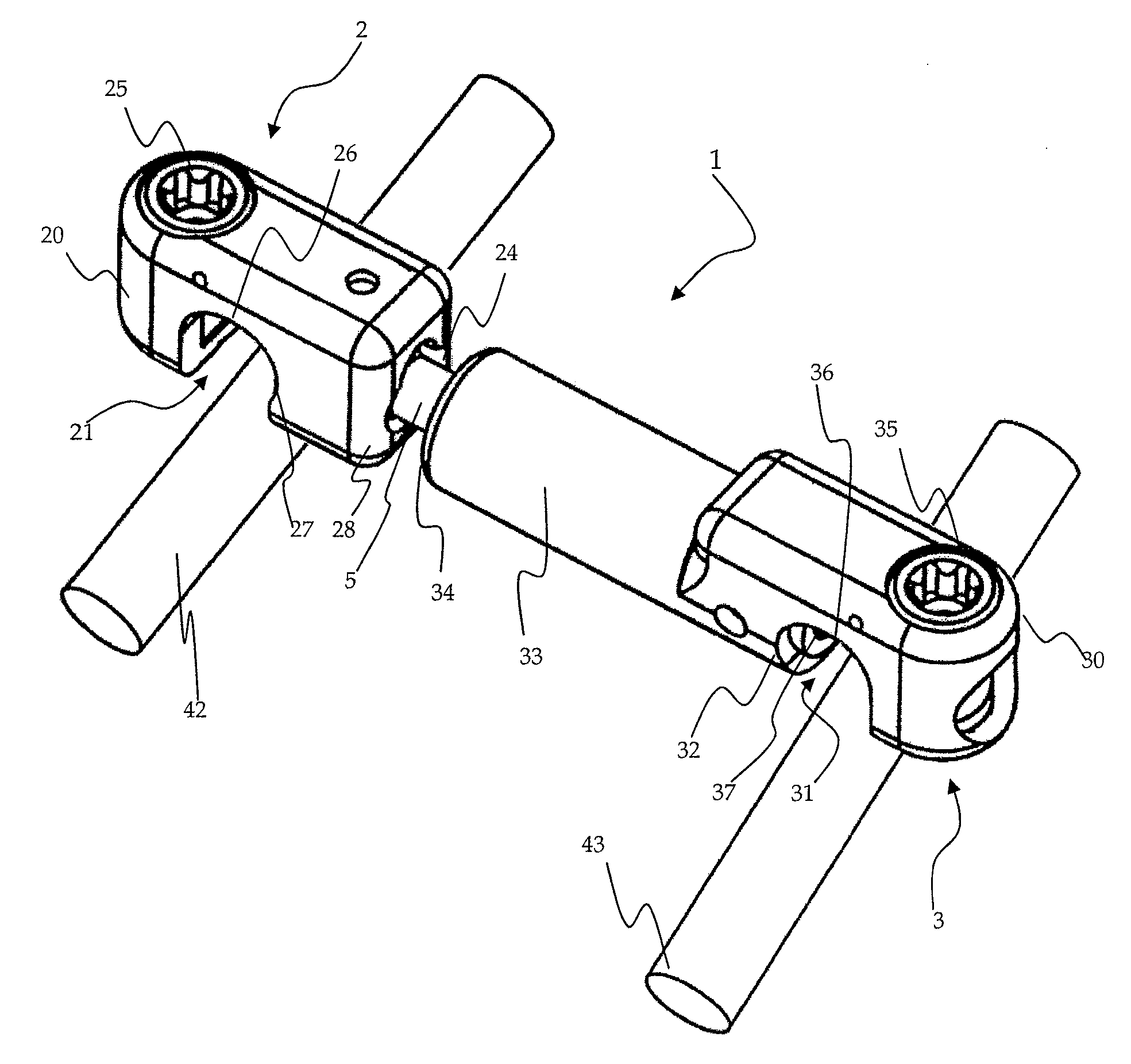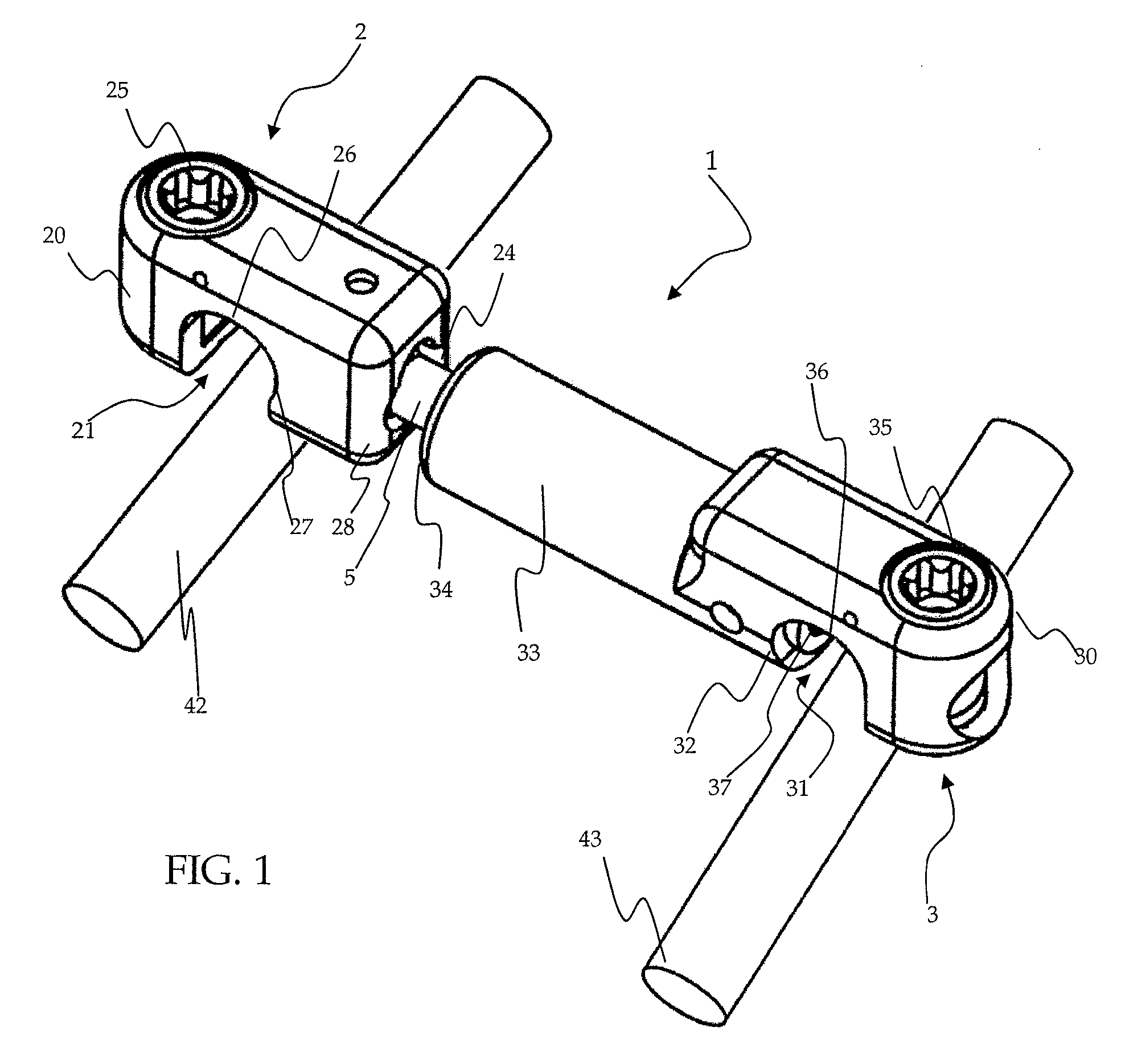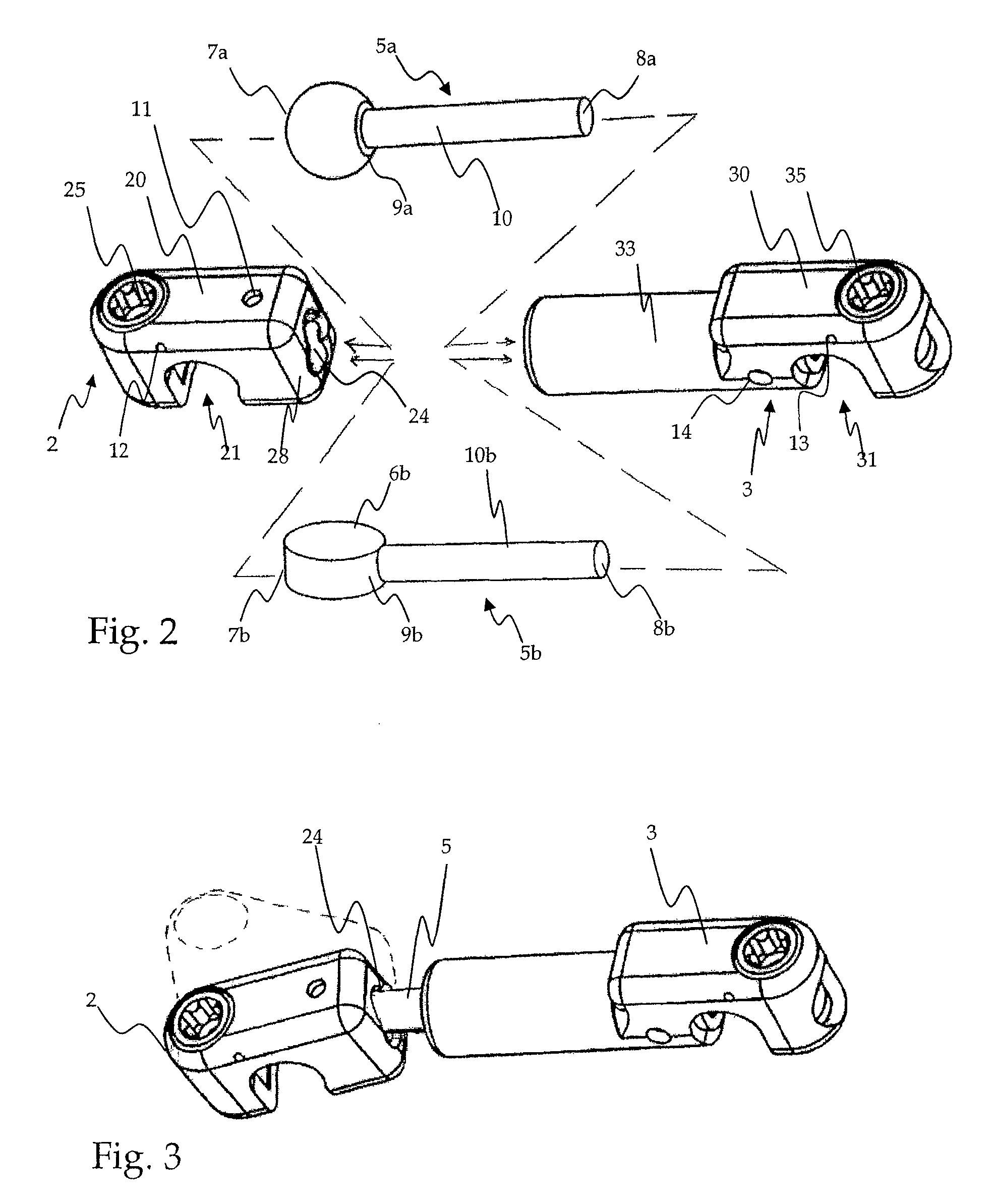Transverse connector
a cross-connector and connector technology, applied in the field of cross-connector or connecting assembly, can solve the problems of cross-connectors with multiple points of articulation and multiple locking mechanisms that are difficult to implement in miss applications, and the number of obstacles is commonly encountered, so as to avoid the potential for cross-threading, avoid unwanted stress and physical damage to the rod, and minimize the effect of the connecting device and the actuator itsel
- Summary
- Abstract
- Description
- Claims
- Application Information
AI Technical Summary
Benefits of technology
Problems solved by technology
Method used
Image
Examples
Embodiment Construction
[0049]One embodiment of a transverse connecting assembly 1 for connecting two spinal rods 42 and 43 is shown in perspective by FIG. 1. The connecting assembly 1 comprises a first rod receiving device 2, a second rod receiving device 3, and a cross rod 5.
[0050]The first rod receiving device includes a rod receiving body 20 with a U-shaped recess 21 for receiving a spinal rod and a lateral opening 24 for receiving the cross rod 5. The recess 21 has an arcuate upper surface 26 and forms a seat configured to engage the surface of the spinal rod 42. A rotatable actuator 25 is disposed in the rod receiving body 20 adjacent to the recess 21. A side opening 24 in the side wall 28 of the body is sized so that the cross rod 5 may pivot. The opening 24 may be configured to permit pivoting of the cross rod 5 in one or more directions. Preferably, the cross rod 5 may pivot 360 degrees in the opening 24. In order to secure the first rod receiving device 2 to the spinal rod 42, the arcuate seat su...
PUM
 Login to View More
Login to View More Abstract
Description
Claims
Application Information
 Login to View More
Login to View More - R&D
- Intellectual Property
- Life Sciences
- Materials
- Tech Scout
- Unparalleled Data Quality
- Higher Quality Content
- 60% Fewer Hallucinations
Browse by: Latest US Patents, China's latest patents, Technical Efficacy Thesaurus, Application Domain, Technology Topic, Popular Technical Reports.
© 2025 PatSnap. All rights reserved.Legal|Privacy policy|Modern Slavery Act Transparency Statement|Sitemap|About US| Contact US: help@patsnap.com



